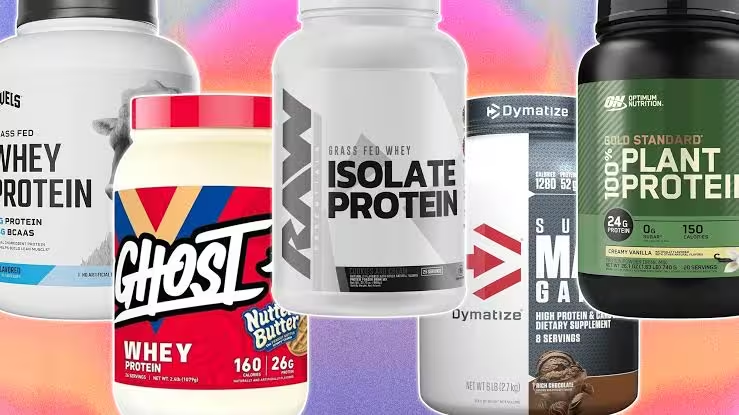6 Minutes
Protein shakes and powdered supplements have become everyday staples for gym-goers and busy consumers alike. But a recent consumer watchdog report has uncovered troubling evidence: many popular protein powders contain lead at levels that exceed safe benchmarks. Here’s what the study found, why it matters for your health, and practical steps to reduce your exposure.
Alarming results from independent testing
A U.S. consumer watchdog group tested 23 widely sold protein powders and meal-replacement products and found that over two-thirds of those samples contained more lead per serving than California’s safety benchmark of 0.5 micrograms (µg) per day. Among the highest readings were Huel Black Edition, which tested at about 6.3 µg of lead per serving, and a mass-gainer product from Naked Nutrition measuring about 7.7 µg per serving. To put that in perspective, those results equal roughly 12–15 times the California threshold per serving.
While immediate poisoning is unlikely, the study highlights chronic risk: many consumers use protein powders daily, sometimes as meal replacements. Repeated intake of even small amounts of lead can cause accumulation in the body over time. The watchdog’s analysis also noted that two other products contained lead levels between about 400% and 600% above the California limit per serving, and that plant-based formulas tended to show higher average lead than dairy (whey) powders.

Why lead in protein powders is a public health concern
Lead is a persistent, toxic heavy metal. It has no beneficial role in human physiology and can damage the nervous system, kidneys, cardiovascular system, and reproductive organs. Children are especially vulnerable: even low-level exposure can impair cognitive development and behavior. In adults, chronic exposure raises risks for hypertension, cognitive decline, and other chronic conditions.
Importantly, there is no universally agreed safe level of lead exposure. Different agencies set varying benchmarks for regulatory or advisory purposes. The California Office of Environmental Health Hazard Assessment uses a conservative benchmark of 0.5 µg/day for lead; the U.S. Food and Drug Administration provides non-binding estimates that are considerably higher (for example, 2.2 µg/day for children and 8.8 µg/day for adults). The watchdog group used the California number because it represents a precautionary standard often applied in consumer-safety assessments.
Regulatory blind spots and testing gaps
Dietary supplements — including protein powders — are not subject to pre-market approval by the FDA in the same way that pharmaceutical drugs are. Manufacturers are responsible for ensuring safety and accurate labeling, but mandatory, standardized pre-release testing for contaminants is limited. As a result, the industry largely self-regulates, and independent third-party testing varies by brand. Some companies voluntarily submit products to independent labs and publish certificates of analysis or NSF/USP certification; many do not.
This regulatory gap means consumers often lack clear, reliable information about contaminant levels in supplements. The watchdog’s report also suggests that high-protein marketing trends may incentivize some manufacturers to expand product lines quickly, sometimes without rigorous contaminant control or testing protocols.
Plant-based vs. dairy powders: notable differences
The report found that plant-based protein powders, on average, contained higher lead concentrations than dairy-based (whey) powders — in some cases nearly nine times higher on average. Soil uptake and contamination during plant processing can introduce heavy metals into plant-derived ingredients such as pea, rice, or hemp protein. That doesn’t mean all plant-based powders are unsafe, but it does argue for careful sourcing, stricter supplier testing, and transparent lab reporting from manufacturers.
How to reduce your risk: practical consumer steps
- Reassess daily need: Evaluate whether you really need a powdered supplement every day. Whole food sources (eggs, dairy, lean meats, legumes, nuts) can meet protein needs for many people.
- Limit frequency: If you use a product flagged for higher lead, follow expert guidance to limit use (for example, no more than once a week), and avoid using it as a complete meal replacement daily.
- Look for third-party testing: Favor brands that publish Certificates of Analysis (COAs) or are certified by independent programs like NSF, USP, or Informed-Sport, which test for contaminants.
- Check ingredient sourcing: Products that disclose raw ingredient origins and supplier testing are more likely to have robust quality control.
- Contact manufacturers: Ask brands about heavy-metal testing frequency, detection limits, and specific lab results for lead and other contaminants.
- Consider population needs: Pregnant people, young children, and people with kidney disease should be especially cautious and consult a healthcare provider before using supplements regularly.
Expert Insight
Dr. Nicholas Bird, Professor of Health Physiology at the University of Illinois, comments: "The protein craze has created market demand that outpaces rigorous quality controls. For most healthy adults with balanced diets, supplemental powders are optional—not essential. When consumers choose supplements, they should prioritize brands with transparent, third-party testing to avoid unnecessary exposure to contaminants like lead."
What researchers recommend and next steps
The watchdog group urges stronger transparency and more routine independent testing across the supplement industry. Researchers call for clear labeling about contaminant testing and for regulators to consider enforceable contaminant limits or mandatory disclosure. For consumers, the safest approach combines measured use, preference for certified products, and reliance on whole-food protein when feasible.
Lead in protein powders is a reminder that nutritional convenience can come with hidden trade-offs. Stay informed, ask questions of manufacturers, and prioritize reliable testing results when choosing supplements.
Comments
Marius
I coach clients, we ditched a plant powder after a 3rd party COA showed metals. Whole foods for most days, supplements only sparingly. Manufacturers, disclose pls
labcore
Is this legit testing? those 12-15x numbers sound wild, curious about lab methods and batch variation... seems like more digging needed


Leave a Comment